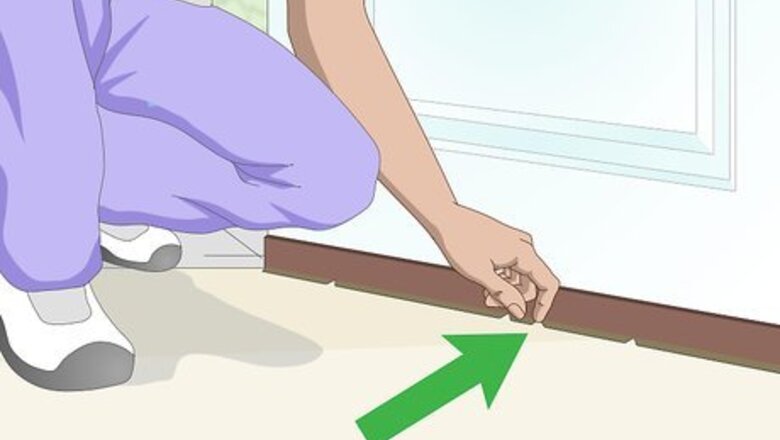
views
Removing the Old Stripping
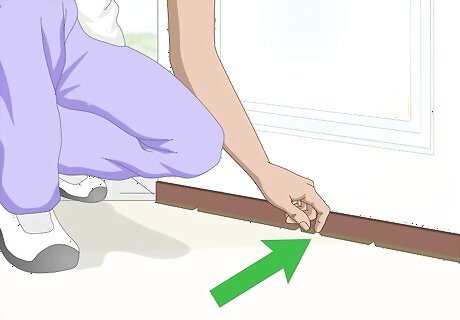
Check your stripping to determine whether it needs replacing. Some types of stripping, particularly felt and foam, only last a few years. If your stripping is worn, cracked, or loose to the point that it doesn’t properly seal the gap under your door, it may be time to replace it. Some thresholds (the wood or metal section underneath the door) are adjustable. If your threshold has screws, simply unscrew them to adjust it to the proper height and close large gaps under your door.

Pull the stripping off if it is attached with adhesive. If your stripping doesn’t have any screws or nails holding it down on the sides, home improvement specialist Jacob Pischer says to “use a putty knife in order to take off the old weatherstripping.” Wedge the putty knife between the stripping and the door and pry it from the bottom. If the stripping doesn’t come off easily, you may need to use a flat-head screwdriver to pry it off.
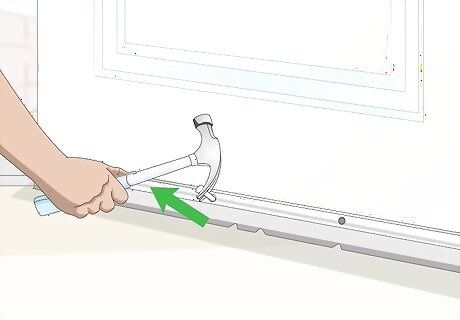
Remove any nails or screws and pry the stripping off. If your stripping is attached with nails or screws, remove them using the claw end of a hammer or a drill set to reverse. If the nails or screws are still in good shape, save them to use later. Then, pry the stripping off with a putty knife or flat-head screwdriver. The stripping may also be attached with staples, which can be removed either with a staple remover or a flat-head screwdriver. If the bottom of the door is dirty, use soap, water, and adhesive cleaner to thoroughly scrub the bottom of the door.

Measure the width of the door you will install stripping on. If multiple doors need new stripping, take the measurements for all of them. You can do this by using a tape measure across the width of the bottom of the door. Write down your measurements and take them with you when choosing a replacement. Most modern doors are 32 to 36 in (81 to 91 cm) wide, so most strippings are about that size or longer. However, your door may be narrower depending on its age. If you’re buying a different type of stripping than you had before, measure the height of the gap under your door. Remember to measure the door itself, not the width of the doorway.
Choosing a Replacement Product
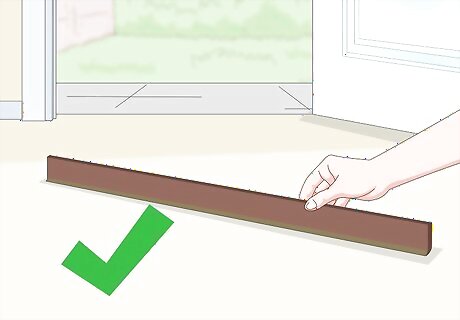
Use the same type of stripping you had if it’s worked well. The best way to know if the stripping you buy will fit is to use the kind you already have. Take the old stripping to the store to match it or write down the brand and style if you know it. If your old stripping was not effective or to your liking, however, try something new. If your old strip has spines that slip underneath the door, try to find a similar strip that will slip into the same holes. If you're replacing weather stripping on an indoor door, handyman Lui Colemares says you can use “a door draft stopper” instead. These “prevent the wind from coming in the doors” and are “mostly applicable to… apartments.”
Buy vinyl or rubber door sweeps for exterior doors. This type of weatherstripping works best for exterior doors and garage doors. These U-shaped sweeps slide onto the bottom of your door and have splines or loops that fill in the gap between the door and the threshold. Pischer recommends buying “a couple of different thicknesses and [trying them] out to make sure that the door closes well because if you used too thick, then it won't let the door to close and it'll just bounce back.”
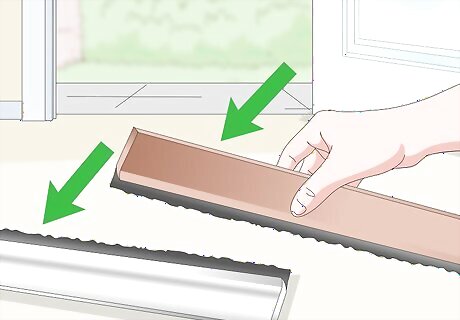
Use a metal, plastic, or wooden door sweep for an easy solution. These door sweeps are not as effective and are more visible than other stripping alternatives, but they’re simple to install and some types are adjustable to fit an uneven threshold.
Most door sweeps attach with adhesive or screws to the inside edge of an exterior door. However, some types go on the outside edge—consult your package’s instructions.
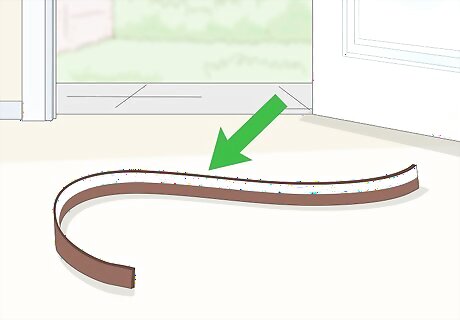
Choose felt or foam stripping if the door doesn’t get used frequently. Felt and foam are both very low-cost and easy to install. However, they typically don’t hold up for very long, so they may not be a good choice for doors that see a lot of wear and tear. A slightly more durable option is reinforced foam or felt, which includes a metal or wooden strip to strengthen the foam or felt. There are also tubular rubber and vinyl strips that you press around the edges of the door to keep out air.
Installing New Stripping

Mark the frame’s length on the stripping and cut with shears or tin snips. If you bought the type of stripping that slides onto the bottom of the door, slide it on first, then mark where to cut it. Cut foam and felt weather stripping with heavy-duty scissors or shears, use tin snips or a saw for metal or metal-reinforced stripping, and cut wood stripping with a hand saw.

Read the directions on your stripping product. The stripping you bought will most likely have instructions on the packaging that explain how it should be installed. Read these carefully and make sure you have the tools necessary before starting. Some types of stick-on stripping need to be applied in temperatures above 20°F (-6.7°C). Your product’s instructions should say whether this is the case.
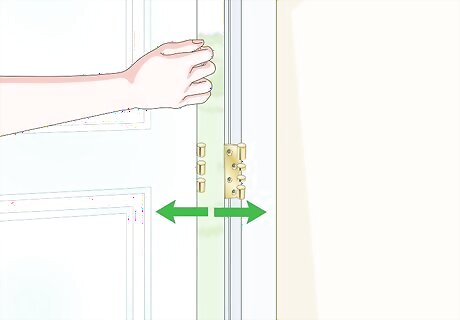
Take your door off its hinges if you can’t easily access the bottom. If you need to attach fasteners to the underside of the door itself, remove the entire door to access it more easily. Insert a nail under each hinge pin and tap gently with a hammer until the pin slides out completely. Put a towel down on the floor, then lift the door with one hand near the handle and the other hand under the middle hinge. Put it down sideways on the towel so you can access the bottom.
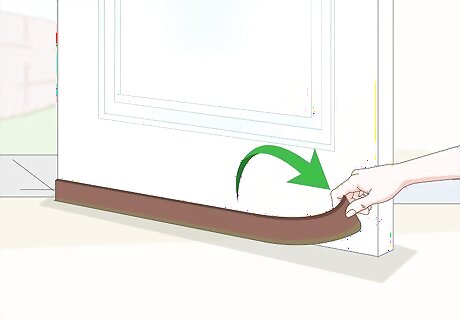
Stick the stripping to the bottom of the door if it has adhesive. If you’re using a stick-on foam or felt product, remove the backing that covers the adhesive. Press it firmly against the bottom of your door, making sure to line it up properly before securing it. If you’re worried that the strip will come off, drill pilot holes into the stripping and screw it into the door. Remove the adhesive a section at a time as you attach it to the door so that it doesn’t stick to anything else while you’re working with it.
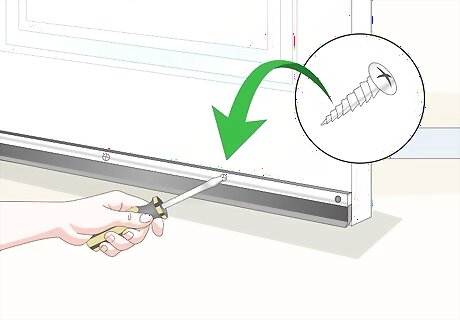
Use nails or screws to fasten the stripping if it doesn’t have adhesive. Slip the stripping on the door as directed. The product’s packaging indicates whether it should be attached with nails, screws, or staples. It may also have pre-made holes for the fasteners to attach through. If it doesn’t have pre-made holes, drill pilot holes in the stripping, then use wood or metal screws to fasten the stripping to the door.

Make sure the door still closes easily once the stripping is installed. The stripping should fill the gap under your door, but not make it harder to open or close. If the door doesn’t shut properly, try using another stripping in a smaller size.












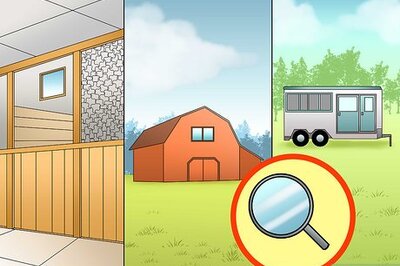






Comments
0 comment